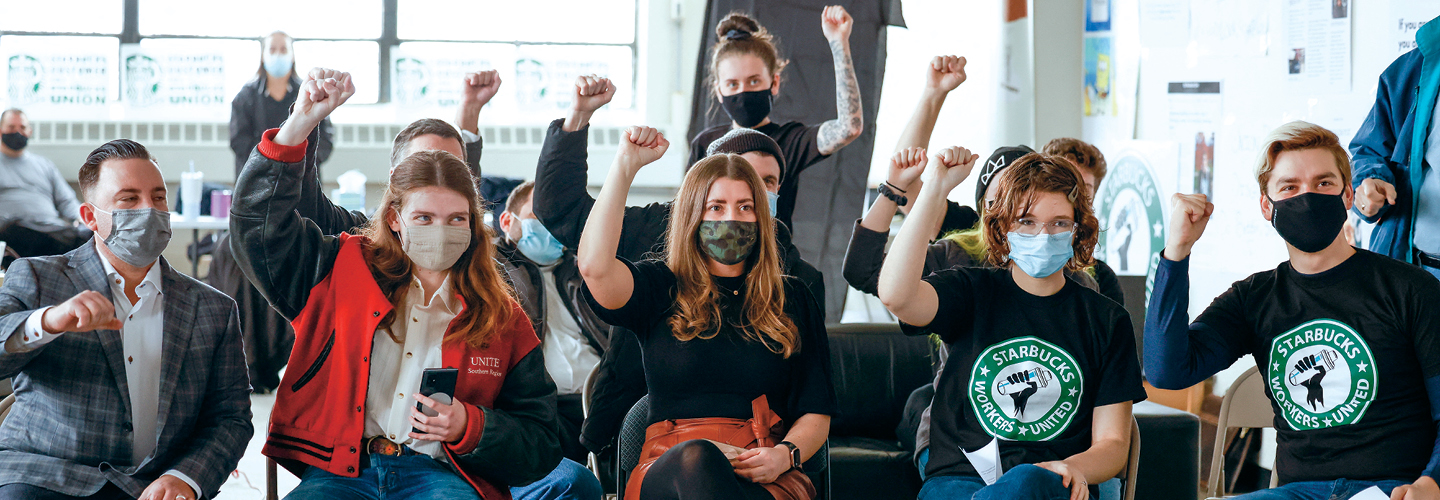Could labor unions—once a vital force in the American workplace—be on the verge of staging a comeback?
A few years ago, that possibility seemed slim. But a re-energized union movement, spurred by younger workers and concerns about safety during the Covid pandemic, has fueled some hope among labor organizers.
In December, employees at a Starbucks in Buffalo, New York, made history by voting to form a union, a first for the coffee company. In January, a second nearby store followed. Though that’s only 2 of Starbucks’s 9,000 locations in the U.S., the votes marked a symbolic victory for organized labor at a time when workers across the country are expressing frustration with wages and working conditions.
Unions are organizations of workers who join together to bargain with their employers about job conditions. The Starbucks employees hope that by unionizing they can change what they say are workplace issues that make their jobs harder, such as insufficient training and chronic understaffing.
“We don’t just want to quit because we’re not happy,” Alexis Rizzo, 24, one of the young Starbucks workers who organized the union drive, told Business Insider. “We want to fight to make it better.”
Within weeks, that enthusiasm had spread to Starbucks stores in Arizona, Colorado, Illinois, Massachusetts, Oregon, Tennessee, and Washington, where workers—almost all under 30—had also filed petitions for union votes.
Labor unions were once a key force in the American workplace. Are they finally about to make a comeback?
A few years ago, the chance of that happening seemed slim. But younger workers and concerns about safety during the Covid pandemic have a led to a re-energized union movement. The shift has given labor organizers some hope.
In December, employees at a Starbucks in Buffalo, New York, made history by voting to form a union. The union was a first for the coffee company. In January, a second nearby store did so as well. Though that’s only 2 of Starbucks’s 9,000 locations in the U.S., the votes marked a symbolic victory for organized labor. Workers across the country are expressing frustration with wages and working conditions. That’s made what’s happened at Starbucks even more meaningful.
Unions are organized groups of workers who unite to bargain with their employers about job conditions. The Starbucks employees hope that by unionizing they can create change. Their efforts aim to improve workplace issues that they say make their jobs harder. Among these issues, they’ve noted poor training and chronic understaffing.
“We don’t just want to quit because we’re not happy,” Alexis Rizzo, 24, one of the young Starbucks workers who organized the union drive, told Business Insider. “We want to fight to make it better.”
Within weeks, that energy had spread to Starbucks stores across the nation. It hit locations in Arizona, Colorado, Illinois, Massachusetts, Oregon, Tennessee, and Washington. Workers in these states had also filed petitions for union votes. And almost all of these employees are younger than 30.

